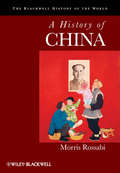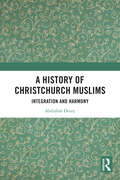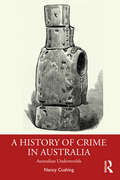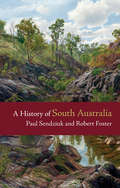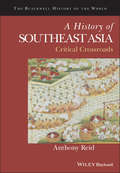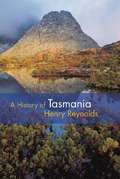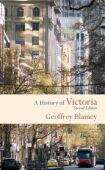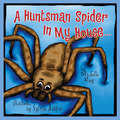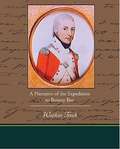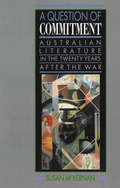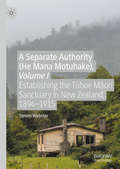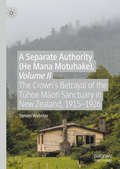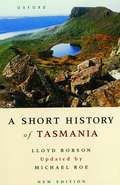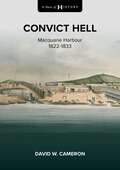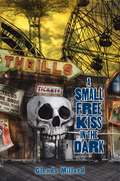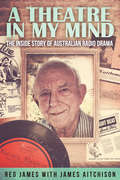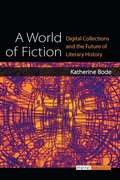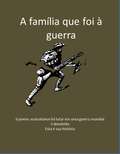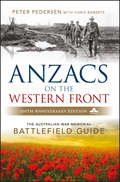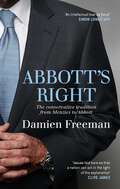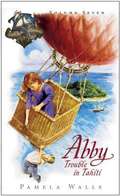- Table View
- List View
A History of China (Blackwell History of the World)
by Morris RossabiCapturing China’s past in all its complexity, this multi-faceted history portrays China in the context of a larger global world, while incorporating the narratives of Chinese as well as non-Chinese ethnic groups and discussing people traditionally left out of the story—peasants, women, merchants, and artisans. Offers a complete political, economic, social, and cultural history of China, covering the major events and trends Written in a clear and uncomplicated style by a distinguished historian with over four decades of experience teaching undergraduates Examines Chinese history through the lens of global history to better understand how foreign influences affected domestic policies and practices Depicts the role of non-Chinese ethnic groups in China, such as Tibetans and Uyghurs, and analyzes the Mongol and Manchu rulers and their impact on Chinese society Incorporates the narratives of people traditionally left out of Chinese history, including women, peasants, merchants, and artisans
A History of Christchurch Muslims: Integration and Harmony
by Abdullah DruryThis book examines a significant part of New Zealand history through a critical analysis of the Muslim community in Christchurch, a neglected but important aspect of wider New Zealand social and religious history.Islam is one of the fastest growing religions in New Zealand and one of the least understood by the wider public. However, the historic reality demonstrates that the first Muslim settlers arrived within 15 years of the proclamation of the colony in 1841, and many have been living quietly in this country and contributing to society ever since. Drury elucidates how New Zealand Muslims have proved it possible to integrate into a European society in the South Pacific whilst retaining an idiosyncratic sense of Islamic communal identity.This book is a useful reference for scholars and educators curious to learn more about Muslims in New Zealand and about the Christchurch Mosque communities before the 2019 shootings.
A History of Crime in Australia: Australian Underworlds
by Nancy CushingThis book provides a lively and accessible account of Australia’s most prominent crimes and criminals of the nineteenth and twentieth century and offers an informative background for those seeking to understand crimes committed today. A History of Crime in Australia examines the imposition of English law on this ancient continent, and how its operation affected both transported offenders from Great Britain and Ireland, and the Aboriginal and Torres Strait Islander peoples whose own systems of Law were overlaid. Drawing upon cutting-edge research in the field, original work by the author, and essays from leading crime history researchers, it addresses the question of whether there was an Australian underworld. In doing so, it provides background for well known offenders including bushranger Ned Kelly and the razor gangs of the 1920s and for sensational crimes like the Mount Rennie Outrage, the Pyjama Girl Mystery and the Shark Arm Murder and the miscarriage of justice following the disappearance of Azaria Chamberlain at Uluru in 1980. Through these case studies, the book draws out points of tension and cohesion within Australian society, exposing the enduring anxiety around those who were considered to be outsiders, and how the criminal justice system was used to manage these concerns. This book includes a guide to conducting research in the field of Australian crime history and sources for further study. Designed as an introductory text for students, this book will be of interest to those studying criminology and crime history, and anyone who would like to deepen their understanding of crime’s place in Australia’s social and cultural history.
A History of Guam
by Lawrence J. Cunningham Janice J. BeatyThis textbook covers the lives and legends of the first people of Guam and traces the island's development into present day.
A History of New Zealand Literature
by Mark WilliamsA History of New Zealand Literature traces the genealogy of New Zealand literature from its first imaginings by Europeans in the eighteenth century. Beginning with a comprehensive introduction that charts the growth of, and challenges to, a nationalist literary tradition, the essays in this History illuminate the cultural and political intricacies of New Zealand literature, surveying the multilayered verse, fiction and drama of such diverse writers as Katherine Mansfield, Allen Curnow, Frank Sargeson, Janet Frame, Keri Hulme, Witi Ihimaera and Patricia Grace. Written by a host of leading scholars, this History devotes special attention to the lasting significance of colonialism, biculturalism and multiculturalism in New Zealand literature. A History of New Zealand Literature is of pivotal importance to the development of New Zealand writing and will serve as an invaluable reference for specialists and students alike.
A History of South Australia
by Paul Sendziuk Robert FosterA History of South Australia investigates South Australia's history from before the arrival of the first European maritime explorers to the present day, and examines its distinctive origins as a 'free' settlement. In this compelling and nuanced history, Paul Sendziuk and Robert Foster consider the imprint of people on the land - and vice versa - and offer fresh insights into relations between Indigenous people and the European colonisers. They chart South Australia's economic, political and social development, including the advance and retreat of an interventionist government, the establishment of the state's distinctive socio-political formations, and its relationship to the rest of Australia and the world. The first comprehensive, single-volume history of the state to be published in over fifty years, A History of South Australia is an essential and engaging contribution to our understanding of South Australia's past.
A History of Southeast Asia: Critical Crossroads (Blackwell History of the World)
by Anthony ReidA History of Southeast Asia: Critical Crossroads presents a comprehensive history of Southeast Asia from our earliest knowledge of its civilizations and religious patterns up to the present day. Incorporates environmental, social, economic, and gender issues to tell a multi-dimensional story of Southeast Asian history from earliest times to the present Argues that while the region remains a highly diverse mix of religions, ethnicities, and political systems, it demands more attention for how it manages such diversity while being receptive to new ideas and technologies Demonstrates how Southeast Asia can offer alternatives to state-centric models of history more broadly 2016 PROSE Award Honorable Mention for Textbook in the Humanities
A History of Tasmania
by Henry ReynoldsThis captivating work charts the history of Tasmania from the arrival of European maritime expeditions in the late eighteenth century, through to the modern day. By presenting the perspectives of both Indigenous Tasmanians and British settlers, author Henry Reynolds provides an original and engaging exploration of these first fraught encounters. Utilising key themes to bind his narrative, Reynolds explores how geography created a unique economic and migratory history for Tasmania, quite separate from the mainland experience. He offers an astute analysis of the island's economic and demographic reality, by noting that this facilitated the survival of a rich heritage of colonial architecture unique in Australia, and allowed the resident population to foster a powerful web of kinship. Reynolds' remarkable capacity to empathise with the characters of his chronicle makes this a powerful, engaging and moving account of Tasmania's unique position within Australian history.
A History of Victoria
by Geoffrey BlaineyA History of Victoria is a lively account of the people, places and events that have shaped Victoria, from the arrival of the first Aboriginal peoples through to the present day. In his inimitable style, Geoffrey Blainey considers Victoria's transformation from rural state to urban society. He speculates on the contrasts between Melbourne and Sydney, and describes formative events in Victoria's history, including the exploits of Ned Kelly, the rise of Australian Football and the Olympics of 1956. Melbourne's latest population boom, sprawling suburbs and expanding ethnic communities are explored. Blainey also casts light on Victoria's recent political history. This edition features sections on the Black Saturday bushfires of 2009, the end of the drought and the controversy surrounding the Wonthaggi desalination plant. New illustrations, photographs and maps enrich the narrative. Written by one of Australia's leading historians, this book offers remarkable insight into Victoria's unique position within Australian history.
A Huntsman Spider In My House . . .
by Michelle Ray“Delightful and charming . . . Deliver[s] a valuable lesson on treating all such creatures with respect, without falling into the trap of being preachy.” —Kiddiespace A Huntsman Spider in My House features a young girl concerned about the huge unwelcome guest in her room. Rather than reacting by immediately killing the spider, as commonly taught by society, she finds another way: She catches the Huntsman instead, and then releases it outside to let it live and contribute to the ecosystem of Australian fauna. The little girl’s actions show that insects are important, necessary, not so scary, and support the world too. “The young, nameless female protagonist of Sylvie Ashford’s charming book speaks in rhyme as she explains the habits of Huntsman Spiders to children as well as to the adults that read the book aloud . . . We thoroughly endorse educating young children to have more tolerance for the lower beasts.” —What’s That Bug? “The story follows her beautifully simplistic childlike thought process as she explores her feelings about it, and the ways in which the spider could be dealt with . . . It leaves you with a deep sense of satisfaction, and provides a practical fear-resolution solution to which kids of all ages can relate.” —Kiddiespace “Michelle Ray, author of A Huntsman Spider in My House, does a wonderful job weaving a story to teach young children not to be afraid.” —The Education Cafe
A Question of Commitment: Australian literature in the twenty years after the war
by Susan LeverIn the years since the Second World War, Australia has seen a period of literary creativity which outshines any earlier period in the nation's literary history. This creativity has its beginnings in the arguments and alignments which emerged at the end of the War, and the changes in perceptions of art and society which occurred during the fifties and early sixties.A Question of Commitment examines the attitudes of writers as diverse as James McAuley, Frank Hardy, Judith Wright, Patrick White and A. D. Hope, as they responded to a changing Australian society during the postwar years. Through their work and that of many others, it considers the debates about literary nationalism, the artistic politics of the Cold War, the threat of technology to art in the Atomic Age, and the nature of the writer's role in the new society. It documents the way in which the political commitments of some writers and the resistance to commitment of others were challenged by political and social changes of the late fifties.Susan McKernan's lively exploration of Australia's writers in a time of innovation provides the reader with the context needed to understand the creative choices they made and, in so doing, introduces wider intellectual and cultural issues which remain relevant to this day.
A Separate Authority (He Mana Motuhake), Volume I: Establishing the Tūhoe Māori Sanctuary in New Zealand, 1894–1915
by Steven WebsterThis book is an ethnohistorical reconstruction of the establishment in New Zealand of a rare case of Maori home-rule over their traditional domain, backed by a special statute and investigated by a Crown commission the majority of whom were Tūhoe leaders. However, by 1913 Tūhoe home-rule over this vast domain was being subverted by the Crown, which by 1926 had obtained three-quarters of their reserve. By the 1950s this vast area had become the rugged Urewera National Park, isolating over 200 small blocks retained by stubborn Tūhoe "non-sellers". After a century of resistance, in 2014 the Tūhoe finally regained statutory control over their ancestral domain and a detailed apology from the Crown.
A Separate Authority (He Mana Motuhake), Volume II: The Crown’s Betrayal of the Tūhoe Māori Sanctuary in New Zealand, 1915–1926
by Steven WebsterFollowing on from Volume I on the formation of the Urewera District Native Reserve, this monograph examines the period from 1908 to 1926, during which time the Crown subverted Tūhoe control of the UDNR, established a mere decade earlier. While Volume I described how the Tūhoe were able to deploy kin-based power to manipulate Crown power as well as confront one another, this volume describes ways in which the same ancestral descent groups closed ranks to survive nearly two decades of predatory Crown policies determined to dismantle their sanctuary. A relentless Crown campaign to purchase individual Tūhoe land shares ultimately resulted in a misleading Crown scheme to consolidate and relocate Tūhoe land shares, thereby freeing up land for the settlement of non- Tūhoe farmers. By the 1950s, over 200 small Tūhoe blocks were scattered throughout one of the largest National Parks in New Zealand. Although greatly weakened by these policies in terms of kinship solidarity as well as land and other resources, Tūhoe resistance continued until the return of the entire park in 2014—with unreserved apologies and promises of future support. In both volumes of A Separate Authority (He Mana Motuhake), Webster takes the stance of an ethnohistorian: he not only examines the various ways control over the Urewera District Native Reserve (UDNR) was negotiated, subverted or betrayed, and renegotiated during this time period, but also focuses on the role of Māori hapū, ancestral descent groups and their leaders, including the political economic influence of extensive marriage alliances between them. The ethnohistorical approach developed here may be useful to other studies of governance, indigenous resistance, and reform, whether in New Zealand or elsewhere.
A Short History of Tasmania
by Lloyd L. Robson Michael RoeThis is a concise and lively history of Tasmania from its earliest times to the late 1990s. It is also a case study of British colonization in Australia, tracing the rocky path from invasion to modernity, from the rigors of Van Dieman's Land to the Franklin Dam controversy. For this new edition, Michael Roe has added two new chapters which provide a history up to 1996.
A Shot of History: Macquarie Harbour 1822-1833 (A Shot of History #1)
by David W. CameronThe year 2022 marks the 200th anniversary of the establishment of the penal settlement at Macquarie Harbour. This convict penal settlement located on the isolated primeval rugged west coast of Van Diemen&’s Land (Tasmania) quickly gained a reputation as an &‘Earthy Hell&’. Colonial historian John West succinctly recorded in 1852: &‘The name Macquarie Harbour is associated exclusively with remembrance of inexpressible depravity, degradation, and woe. Sacred to the genius of torture, Nature concurred with the objects of its separation from the rest of the world, to exhibit some notion of a perfect misery. There, man lost the aspect and the heart of man …. This region is lashed with tempests: the sky is cloudy, and the rain falls more frequently than elsewhere. In its chill and humid climate, animal life is preserved with difficulty; half the goats died in one season, and sheep perished; vegetation, except in its coarsest and most massive forms is situated and precarious …. The passage to this dreary dwelling place was tedious and often dangerous. The prisoners, confined in a narrow space, were tossed for weeks on an agitated sea. As they approached, they beheld a narrow opening chocked with a bar of sand and crossed with peril. This they called Hell&’s Gate – not less appropriate to the place than to the character and torment of the inhabitants: beyond they saw impenetrable forests, skirted with an impervious thicket; and beyond still enormous mountains covered with snow, which rose to the clouds like walls of adamant: every object wore the air of rigour, ferocity, and sadness&’. This was just the beginning for those sentenced to Macquarie Harbour the barbaric treatment from officials and fellow convicts alike, resulted in Macquarie Harbour representing a true convict hell hole, not only resulting in murder, but in cannibalism by several men in their attempts to escape.
A Small Free Kiss in the Dark
by Glenda MillardTwo young boys, an old tramp, a beautiful teenage dancer, and the girl's baby--ragtag survivors of a sudden war--form a fragile family, hiding out in the ruins of an amusement park. This complex and haunting exploration of life on the edge and what it takes to triumph over adversity is a story about the indomitable nature of hope.
A Theatre in my Mind
by James Aitchison Reg JamesRadio drama is often called the "theatre of the mind", wherein a listener's imagination is stimulated by voices, sounds, and music to create mental imagery as real as any bricks-and-mortar theatre. Reg James spent a lifetime in the thick of Australian radio drama. Rising through the ranks at Grace Gibson Radio Productions -- from despatch boy to general manager -- he takes us behind the scenes into the fascinating world of broadcasting from the 1930s to the present day. The great shows, the magic voices, the pure drama of putting shows to air -- Reg shares his secrets and stories in this amazing journey back in time to a lost era. With co-author James Aitchison, Reg invites you to join him in this unique theatre. Essential reading for anyone who enjoyed listening to radio serials, and for those fascinated by Australian radio. Authors of Yes, Miss Gibson, the biography of Grace Gibson.
A World of Fiction: Digital Collections and the Future of Literary History (Digital Humanities)
by Katherine BodeDuring the 19th century, throughout the Anglophone world, most fiction was first published in periodicals. In Australia, newspapers were not only the main source of periodical fiction, but the main source of fiction in general. Because of their importance as fiction publishers, and because they provided Australian readers with access to stories from around the world—from Britain, America and Australia, as well as Austria, Canada, France, Germany, New Zealand, Russia, South Africa, and beyond—Australian newspapers represent an important record of the transnational circulation and reception of fiction in this period. Investigating almost 10,000 works of fiction in the world’s largest collection of mass-digitized historical newspapers (the National Library of Australia’s Trove database), A World of Fiction reconceptualizes how fiction traveled globally, and was received and understood locally, in the 19th century. Katherine Bode’s innovative approach to the new digital collections that are transforming research in the humanities are a model of how digital tools can transform how we understand digital collections and interpret literatures in the past.
A família que foi à guerra
by Gordon Smith Leandro Mabillot"A família que foi à guerra" é um retrocesso aos prematuros anos de 1900, durante o período de guerra. A história segue seis membros de uma família australiana enquanto decidem ir à guerra e lutá-la por diferentes razões. O livro reconta seus altos e baixos, lutas e triunfos. É, ao mesmo tempo, inspirador e desolador o que essas pessoas deixaram para trás (famílias e filhos) e quais as dificuldades encararam durante suas jornadas. A história encobre suas jornadas pela guerra na Europa e explora algumas de suas complexas características e resume a vida dos três que retornaram. Também realça a angústia da mãe o qual filho foi perdido nos campos de batalha de Fromelles e cujo corpo ainda não foi identificado cem anos depois. Seis membros da família foram à guerra. Apenas três retornaram!
ANZACS on the Western Front: The Australian War Memorial Battlefield Guide
by Peter PedersenA newly updated, lavishly illustrated account of the ANZACs involvement in the Western Front—complete with walking and driving tours of 28 battlefields. With rare photographs and documents from the Australian War Memorial archive and extensive travel information, this is the most comprehensive guide to the battlefields of the Western Front on the market. Every chapter covers not just the battles, but the often larger-than-life personalities who took part in them. Following a chronological order from 1916 through 1918, the book leads readers through every major engagement the Australian and New Zealanders fought in and includes tactical considerations and extracts from the personal diaries of soldiers. Anzacs On The Western Front: The Australian War Memorial Battlefield Guide is the perfect book for anyone who wants to explore the battlefields of the Western Front, either in-person or from the comfort of home. It does far more than show where the lines that generals drew on their maps actually ran on the ground and retrace the footsteps of the men advancing towards them. It is a graphic and wide-ranging record of the Australian and New Zealand achievements, and of the huge sacrifices both nations made, in what is still arguably the most grueling episode in their history. A complete guide to the ANZAC battlefields on the Western Front—featuring short essays on important personalities and events, details on relevant cemeteries, museums, memorials and nearby places of interest, and general travel information. Carefully researched and illustrated with colorful maps and both modern and period photographs. Includes information about the Sir John Monash Centre near Villers-Bretonneux in France—a new interpretative museum set to open on Anzac Day 2018, coinciding with the centenary of the Year of Victory 1918. Anzacs On The Western Front: The Australian War Memorial Battlefield Guide is the perfect book for historians, history buffs, military enthusiasts, and Australians and New Zealanders who want to explore the military history and battlefields of their heritage.
Abbott's Right: The conservative tradition from Menzies to Abbott
by Damien FreemanTony Abbott may have been a Rhodes Scholar, but some commentators are convinced that he offered nothing more than three-word slogans. Abbott's Right challenges this perception, and presents Abbott as someone who rejoices in the political battle of ideas. It looks at how the contemporary conservative voice that Abbott champions was fashioned by Sir Robert Menzies, Malcolm Fraser and John Howard, and reflects on what it means to be conservative in modern Australia. It argues that the Liberal Party should return to its conservative roots as a centre-right party and signals how, as such, it might address the public policy challenges in the years ahead. Tony Abbott responds to Freeman's analysis in an afterword, and sets it in the context of the questions that Donald Trump's ascendancy poses for conservatives and Labor alike.
Abby--Trouble in Tahiti (South Seas Adventures #7)
by Pamela WallsSouth Seas Adventures is a fun, new series that is a surefire hit for 8- to 12-year-old girls. Lots of excitement will keep kids coming back for each new Abby title. In books 7 and 8, Abby, her family, and her best friend Luke have many adventures.
Abby: Into the Dragon's Den (South Seas Adventures #6)
by Pamela June WallsSet in the South Seas during the 1840s, Abby, her family, and her best friend, Luke, find themselves on adventures complete with pirates, volcanoes, and Komodo dragons. Through these adventures they learn that God is faithful, he always keeps his promises, and he is always watching over them.
